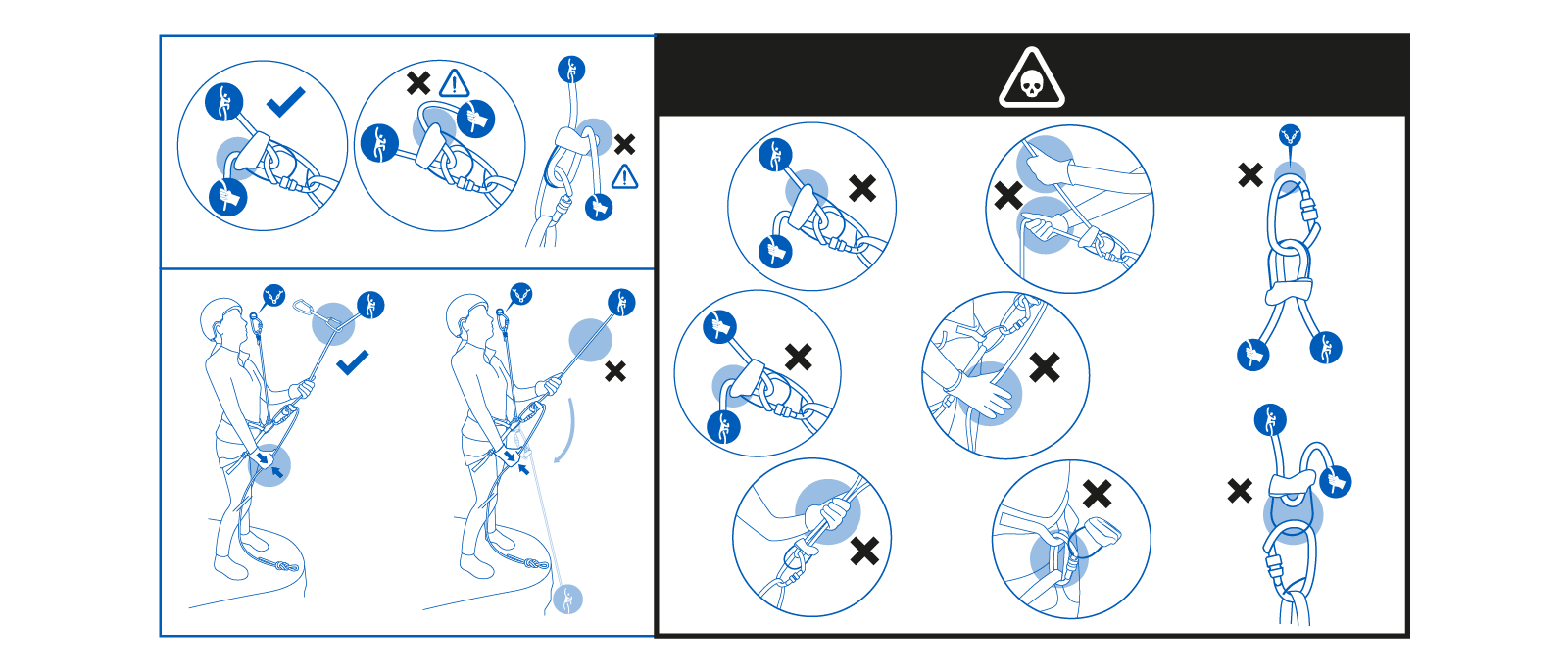WARNING
CAUTION: TRAINING ESSENTIAL
Before using this product, you must read and understand all the instructions for use.
Rock climbing and mountaineering are dangerous.
It is your responsibility to learn the necessary techniques for these activities and to use the equipment correctly.
This device may only be used by qualified and/or competent persons, or under the direct supervision of a qualified and/or competent person.
Do not use this equipment without prior training or if you have any doubts.
You are also responsible for making sure you're aware of any updates concerning your equipment. Improper use poses additional risks.
We cannot envisage all of the incorrect uses of this harness. Hence, any use other than that described in this user guide is strictly prohibited. Failure to respect any of these warnings may result in serious injury or death. If you are unsure or have not understood this user guide, do not hesitate to contact us via Decathlon Customer Service.
This braking device is designed to be used with personal protective equipment to prevent falls from height in accordance with current standards.


















